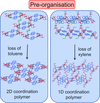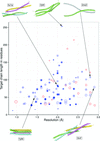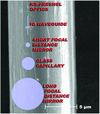issue contents
March 2015 issue

editorial
BIOLOGY | MEDICINE
The ability of crystallography to illuminate biology and contribute to medical advances continues to grow. Recent advances expand its reach while also asking questions of its practitioners.
essays
CHEMISTRY | CRYSTENG
Some questions are raised concerning the interpretation of distances between atoms of neighbouring molecules in crystals.
CHEMISTRY | CRYSTENG
Short atom–atom distances between molecules are almost always indicative of specific intermolecular bonding. These distances may be used to assess the significance of all hydrogen bonds, including the C–H⋯O and even weaker C–H⋯F varieties.
CHEMISTRY | CRYSTENG
The electron density distribution ρ(r) contains the information needed to quantitatively analyze bonding interactions between atoms, exhibiting short, medium or long inter-nuclear distances. Atom–atom bonding interactions, the orientation of molecules in the space and crystal structure are all inter-determined.
scientific commentaries
BIOLOGY | MEDICINE
The successful approach to solving crystal structures of coiled-coil proteins with the program AMPLE is discussed.
CHEMISTRY | CRYSTENG
Reactions in the solid state are at the core of crystal engineering as they can result in new crystalline phases that are not always accessible by traditional solution methods. The work of Brammer and co-workers [Wright et al. (2015), IUCrJ, 2, 188–197] represents a clear example of this potential as applied to the synthesis of a silver–phenazine coordination polymer.
research papers
BIOLOGY | MEDICINE
This article describes the structure determination of a membrane protein by serial injection of microcrystals in lipidic cubic phases into a synchrotron microfocus beam. The method is discussed with respect to serial femtosecond crystallography at free-electron lasers.
BIOLOGY | MEDICINE
Download citation


Download citation


A peptide fortuitously crystallized to form a motif exhibiting 13-fold non-crystallographic symmetry as judged by self-rotation function analysis. Molecular-replacement phasing used a small α-helix as the search model and was only successful with the recently deployed ARCIMBOLDO_LITE.
PDB reference: 4wg0
CHEMISTRY | CRYSTENG
Download citation


Download citation


The structural transformations of a family of coordination polymers that entrap small arenes (toluene, xylene) by Ag(I) coordination has been investigated. The study highlights the role in these transformations of vapour–solid interactions and pre-organization in the solid state.
BIOLOGY | MEDICINE
AMPLE solved 80% of a large set of coiled-coil protein targets of diverse architectures by molecular replacement with ab initio structure predictions. Successes included targets of up to 253 residues, cases of diffraction to only 2.9 Å resolution and macromolecular complexes containing proteins with other folds or DNA.
MATERIALS | COMPUTATION
New developments in the modelling of flexible biological macromolecules from SAXS data offer extended possibilities of using high-resolution models and provide metrics for quantitative characterization of the reconstructed ensembles.
feature articles
CHEMISTRY | CRYSTENG
This article discusses the high-pressure behaviour of molecular crystal structures, energetic materials, phases relevant to the Earth's interior, materials with a pressure-induced expansion in one or two directions, dealing with high-pressure data from crystals with twinning and pseudosymmetry, pressure-induced phase transitions including an incommensurate phase, and technical developments.
NEUTRON | SYNCHROTRON
The new generation of synchrotron radiation light sources will drive analytical methods for the determination of the structure and function of molecules and crystals towards new limits in sample size and temporal resolution.
PHYSICS | FELS
The advent of hard X-ray free-electron lasers has opened a new chapter in macromolecular crystallography. Recent results, developments and prospects of serial femtosecond crystallography are described.
MATERIALS | COMPUTATION
Crystallization processes are characterized by activated events, thus the application of enhanced sampling techniques such as metadynamics in order to study phenomena occurring at the molecular scale through molecular modelling. This paper provides an introduction to metadynamics and an overview of its applications in the context of crystal nucleation.
CHEMISTRY | CRYSTENG
Two recently developed three-dimensional electron diffraction methods have shown great potential for phase identification and structure determination of polycrystalline powder materials. Their combination with powder X-ray diffraction makes them powerful techniques for phase identification in multiphase samples and the determination of very complex structures from nano- and micron-sized crystals.
topical reviews
BIOLOGY | MEDICINE
A topical review is presented focusing on the recent developments in synchrotron radiation macromolecular crystallography. The review covers source and beamline developments, and applications including spin-offs into other areas of science and the impact upon industrial interests.
NEUTRON | SYNCHROTRON
This topical review describes leading-edge functional materials research using in situ and in operando neutron and X-ray analytical techniques. Methods frequently used, experimental approaches and protocols, and results from a wide variety of materials are described, showcasing the type of information that can be obtained for these materials.



 journal menu
journal menu




 access
access






























